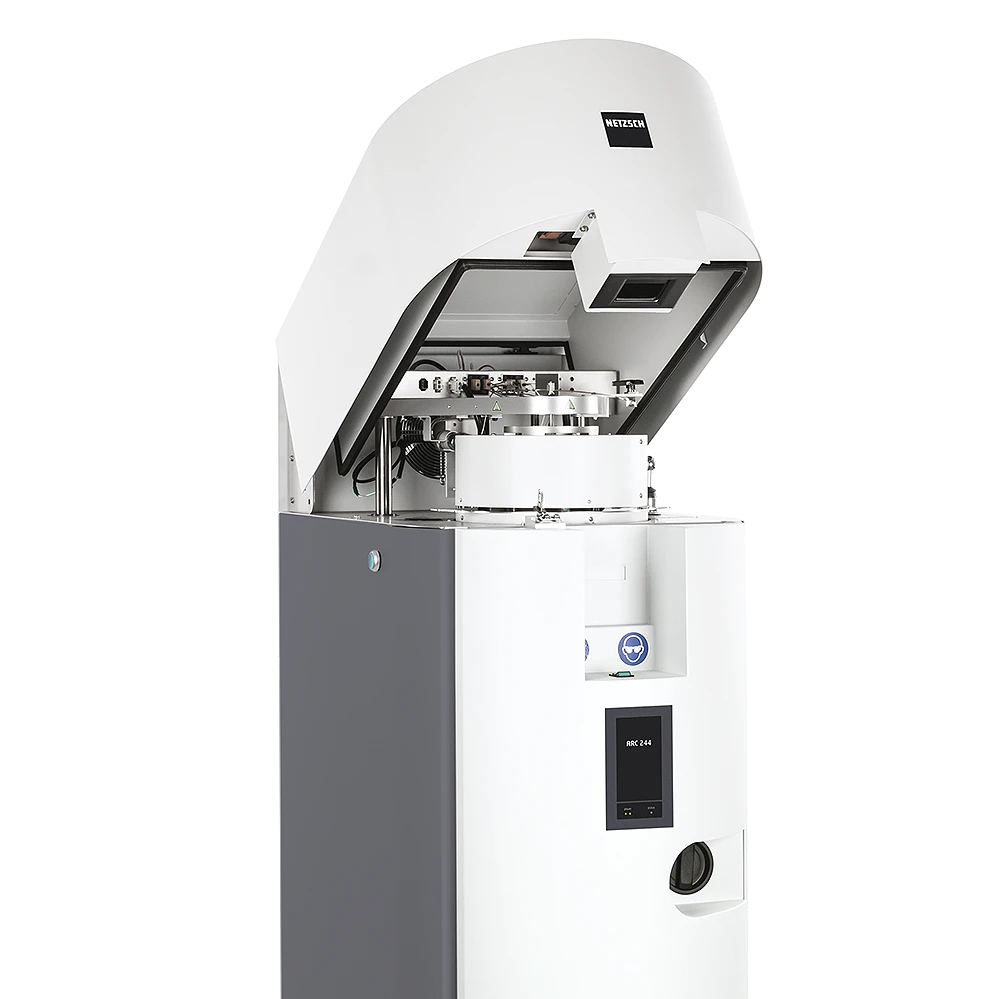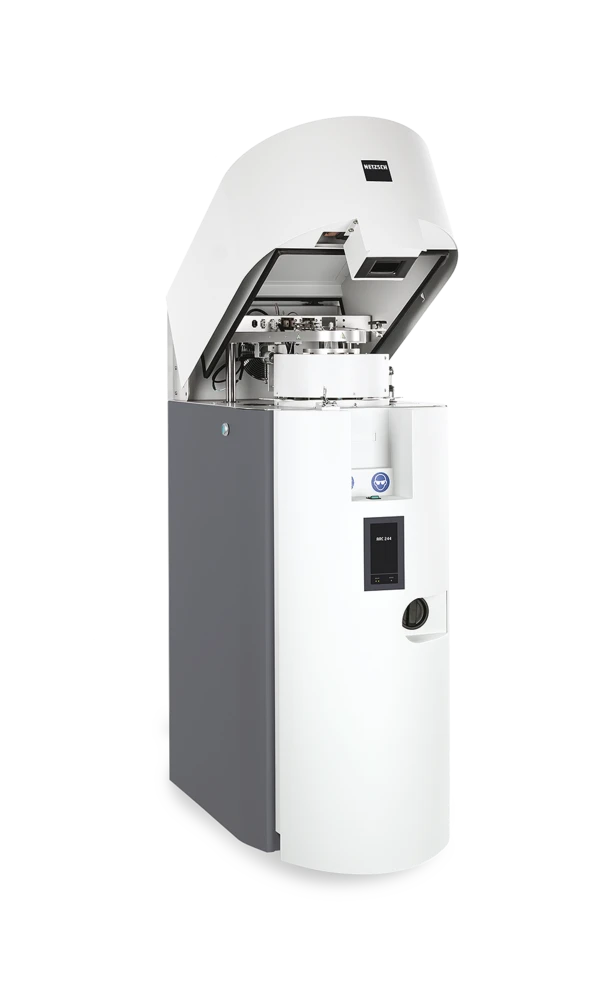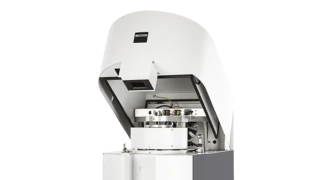The cost‐effective Accelerating Rate Calorimetry (ARC)The method describing isothermal and adiabatic test procedures used to detect thermally exothermic decomposition reactions.ARC® 244 is designed to safely measure the amount and rate of heat release associated with the processing or storage of chemicals within a container volume between 1 ml and 130 ml.
This is the calorimeter which uses the same design as the first Accelerating Rate Calorimetry (ARC)The method describing isothermal and adiabatic test procedures used to detect thermally exothermic decomposition reactions.ARC® system developed by DOW for those customers interested in keeping the same platform.
This information is vital in developing and evaluating processes to ensure safe operation and to prevent Thermal runawayA thermal runaway is the situation where a chemical reactor is out of control with respect to temperature and/or pressure production caused by the chemical reaction itself. Simulation of a thermal runaway is usually carried out using a calorimeter device according to accelerated rate calorimetry (ARC).thermal runaway which can have devastating effects.
The Accelerating Rate Calorimeter 244 (Accelerating Rate Calorimetry (ARC)The method describing isothermal and adiabatic test procedures used to detect thermally exothermic decomposition reactions.ARC® 244) technology is integral to designing inherently safer batteries as well as measuring energetic materials used in such products as explosives, propellants, and air bags.
Major Features and Benefits
- Tube heater reduces heat losses due to reflux
- Windows 10™ operating system standard
- Smaller footprint
- Lift mechanism for calorimeter top
- Experimental wizards for easy test set-up
- Power Compensation Module (optional)
- Increased safety and interlock features
- Operation modes:
∙ Heat-Wait-Search (HWS)Heat-Wait-Search is a measurement mode used in calorimeter devices according to accelerating rate calorimetry (ARC).Heat-Wait-Search (primary mode of operation)
∙ Iso-Fixed technique
∙ Iso-Track technique
∙ Ramp mode for fast screening of unknown samples - With VariPhi
∙ Heat-Wait-Search (HWS)Heat-Wait-Search is a measurement mode used in calorimeter devices according to accelerating rate calorimetry (ARC).Heat-Wait-Search, with Phi = 1
∙ Constant power
∙ Constant heating rate
∙ Fire exposure
∙ True IsothermalTests at controlled and constant temperature are called isothermal.isothermal mode

Request a Quote
Technical Data
Operating Test Cell Temperature Range
Heat-Wait-Search
Iso-Fixed/Iso-Track
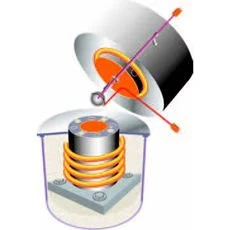
Ramp mode for screening unknown samples
Scanning Mode with Power Compensation Module
IsothermalTests at controlled and constant temperature are called isothermal.Isothermal Mode with Power Compensation Module
Test cell materials for spherical vessels with a wall thickness between 0.4 mm and 0.9 mm:
Hastelloy
Stainless Steel
Titanium
(Volume: 1 ml to 130 ml)
Test cell materials for tube-type vessels with a wall thickness of 0.4 mm and 0.9 mm:
Stainless Steel
Titanium
(Volume: 1 ml to 8.5 ml)
Applications
Process Saftey
Comparison to legacy data
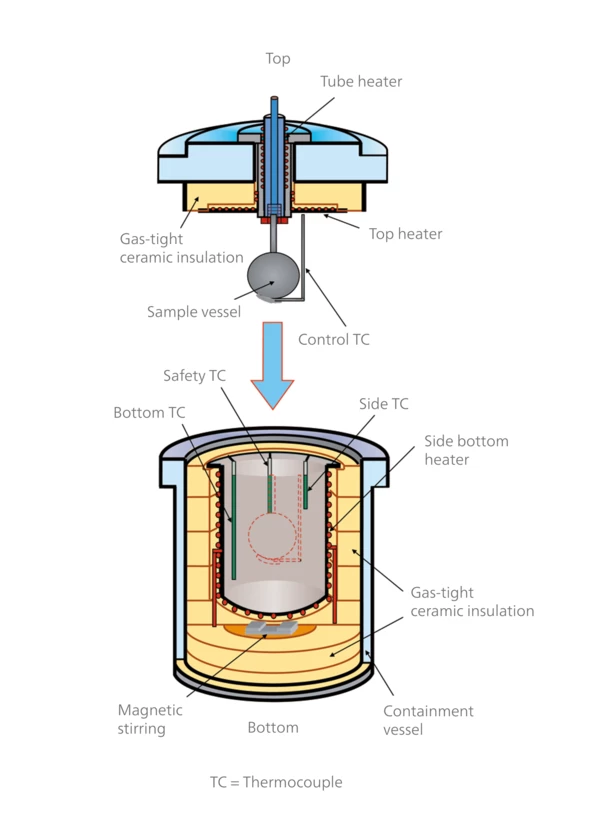
Literature

